- Home
- Beyond Basics
- Watercolour Pencils
Welcome to the Watercolour Pencils Hub
Have you ever been using your coloured pencils, loving the control, but wishing you could add a splash of painterly flow without the full watercolour setup?
I know that feeling well.
Watercolour pencils offer that perfect bridge, combining the familiar feel of a pencil with the magic of water. This hub is your starting point for exploring this versatile medium with confidence.
Good to Know Before You Start
Paper is Key: Watercolour pencils require watercolour paper. Using them on standard drawing paper will likely lead to buckling and frustration. A hot-pressed (HP) surface is smooth and excellent for pencil work.
Pigment Varies: Different brands will have different pigment loads. Some are extremely strong and ink-based, like Derwent Inktense, while others yield more subtle hues.
They Aren't Traditional Watercolours: They behave differently from pan or tube watercolours, offering a unique set of possibilities and techniques.
Is This Medium Right for Your Current Goals?
Focus on Watercolour Pencils When You Want To:
- Add painterly effects and washes to your pencil drawings.
- Create vibrant underpaintings for your dry coloured pencil work
- Work faster when covering large background areas.
- Explore a new, versatile medium that combines drawing and painting.
Stick to Dry Coloured Pencils For Now If:
- You are still mastering the core skills of layering and blending.
- Your primary goal is photorealism with maximum control and fine detail.
- You want to focus on fundamentals before exploring mixed media.
Your Learning Pathway
Here are the resources to guide you. Start with the fundamentals or, if you're feeling adventurous, jump straight into a tutorial.
Learn the Fundamentals
- Watercolour Pencils: A Beginner's Primer – Start here for a full introduction to what watercolour pencils are, the types available, and what to expect.
- Essential Watercolour Pencil Techniques – Learn the core skills, from creating a flat wash and graded wash to lifting colour and adding dry details.
- Choosing Brushes for Watercolour Pencils – A guide to the best brush shapes and types to get the effects you want for your work.
- How to Stretch Watercolour Paper – Prevent your paper from buckling with this essential preparation technique for heavier washes.
For a Quick Skill-Builder:
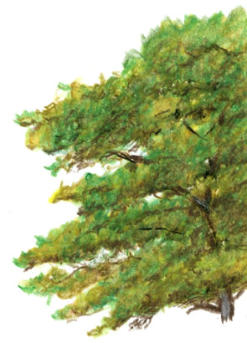
- Mini-Tutorial: Simple Scribble Tree – Have 15 minutes? This quick and fun exercise is a fantastic way to practice blending greens and creating an effective tree texture with the scribble stroke.
Try These Tutorials
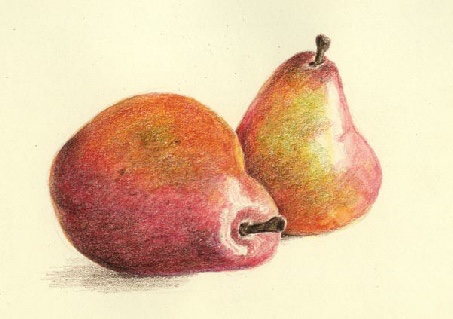
- Beginner Tutorial: A Pair of Pears – This is the perfect first project to practice basic techniques on a simple subject.
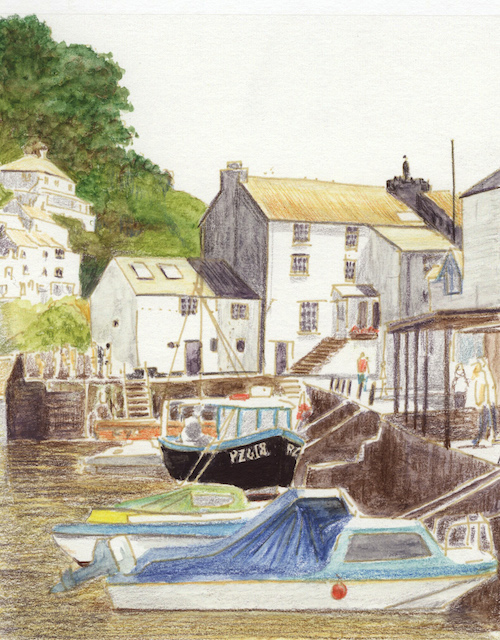
- Line and Wash Harbour Scene – Ready to combine drawing and painting? This comprehensive tutorial guides you through creating a detailed scene, building your confidence with a beautiful result.
Challenge Yourself with a Full Landscape:
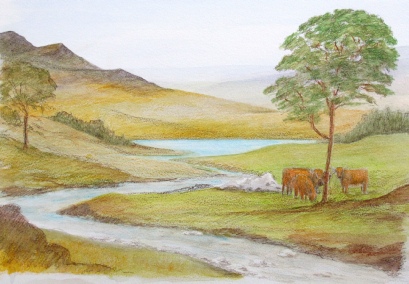
Tutorial: Scottish Hills Landscape – Take your skills further with this tutorial on creating a complete landscape, focusing on layering colours to build a sense of distance.
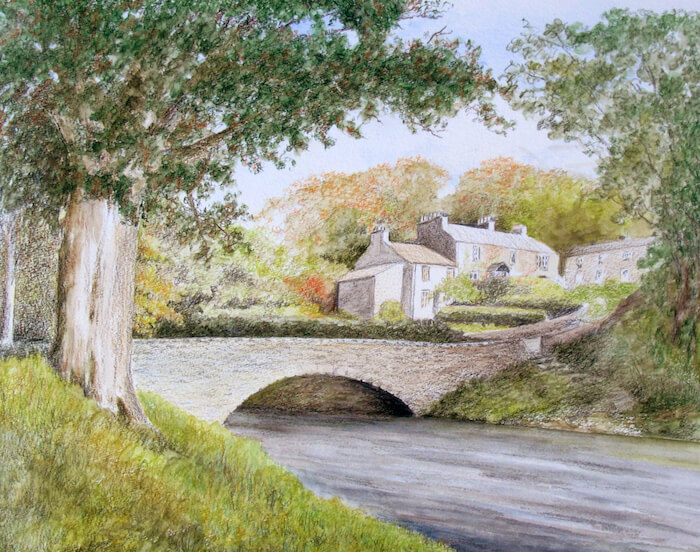
Tutorial: The Yorkshire Bridge Scene – Tackle a more complex subject with this in-depth project that brings together multiple techniques to create a finished painting.
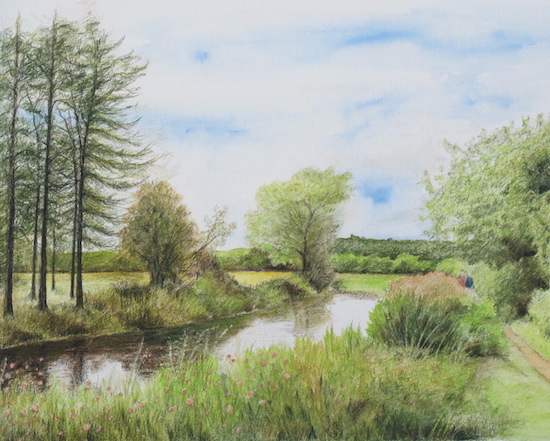
Tutorial: A Coventry Canal Scene - Learn to render a variety of realistic trees and lush foliage, and master the art of capturing soft reflections in the water with this tranquil landscape project.
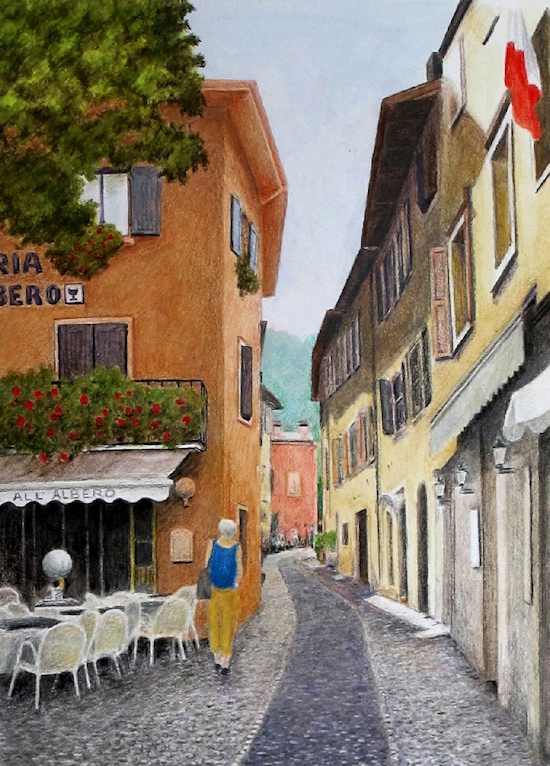
Tutorial: Italian Street Scene – Ready for a real challenge? Tackle perspective, architectural details, and a bustling street atmosphere in this advanced tutorial.
Advanced Applications & Mixed Media
Tutorial: WCP Underpainting for a Country Lane – Discover how to use WCPs to create a vibrant underpainting that will make your final dry coloured pencil layers richer. This step-by-step project shows you how to combine the two mediums effectively.
Common Pitfalls (And How to Avoid Them)
A little preparation can help you avoid the most common frustrations with watercolour pencils.
Mistake 1: Applying Too Much Dry Pigment
The Problem: You apply heavy layers of dry pencil, just as you would with traditional coloured pencils. When you add water, the colour becomes overpowering and hard to control.
The Fix: Start with very light layers of dry colour. You will be surprised how much the colour intensifies with water. You can always add more later.
Mistake 2: Using the Wrong Paper
The Problem: You use your standard drawing or cartridge paper. As soon as you add water, the paper buckles, pills, and can even tear.
The Fix: Always use watercolour paper. A weight of 300gsm (140lb) is ideal as it can handle water without needing to be stretched beforehand.
Mistake 3: A Dirty Water Pot
The Problem: You rinse a brush carrying dark blue pigment in your water pot. If you then dip your clean brush into that same murky water to wet a light yellow area, the leftover pigment will mix, resulting in dull, muddy greens.
The Fix: Use two jars of water. One is for rinsing your brushes thoroughly, and the other is your 'clean' water source for applying to the paper.
Essential Supplies
- Watercolour Pencils: For a great start, consider sets from Faber-Castell (Albrecht Dürer), Derwent (Watercolour or Inktense), or Staedtler (Karat Aquarelle). These are widely available from UK art suppliers.
- Watercolour Paper: Look for Hot-Pressed (HP) paper pads from brands like Daler Rowney, Derwent, or Hahnemühle in stores or online. A 300gsm weight is recommended.
- Brushes: A small round nylon brush from a local art shop will be perfect to begin with.
Ready to Make a Start?
Watercolour pencils are a fantastic way to add a new dimension to your art. Don't be afraid to experiment
Your Next Step: Choose one guide or tutorial from the "Learning Pathway" section above that sparks your interest. I suggest starting with the "Beginner's Primer" to get a solid overview, or the "Pair of Pears" tutorial if you're keen to start painting right away.
Each linked guide includes step-by-step instructions and everything you need to explore this medium with confidence.
Improve Your Pencil Art: Get Free Tips & Techniques
Sign up for our newsletter – just occasional emails packed with practical advice and inspiration for pencil artists like yourself






